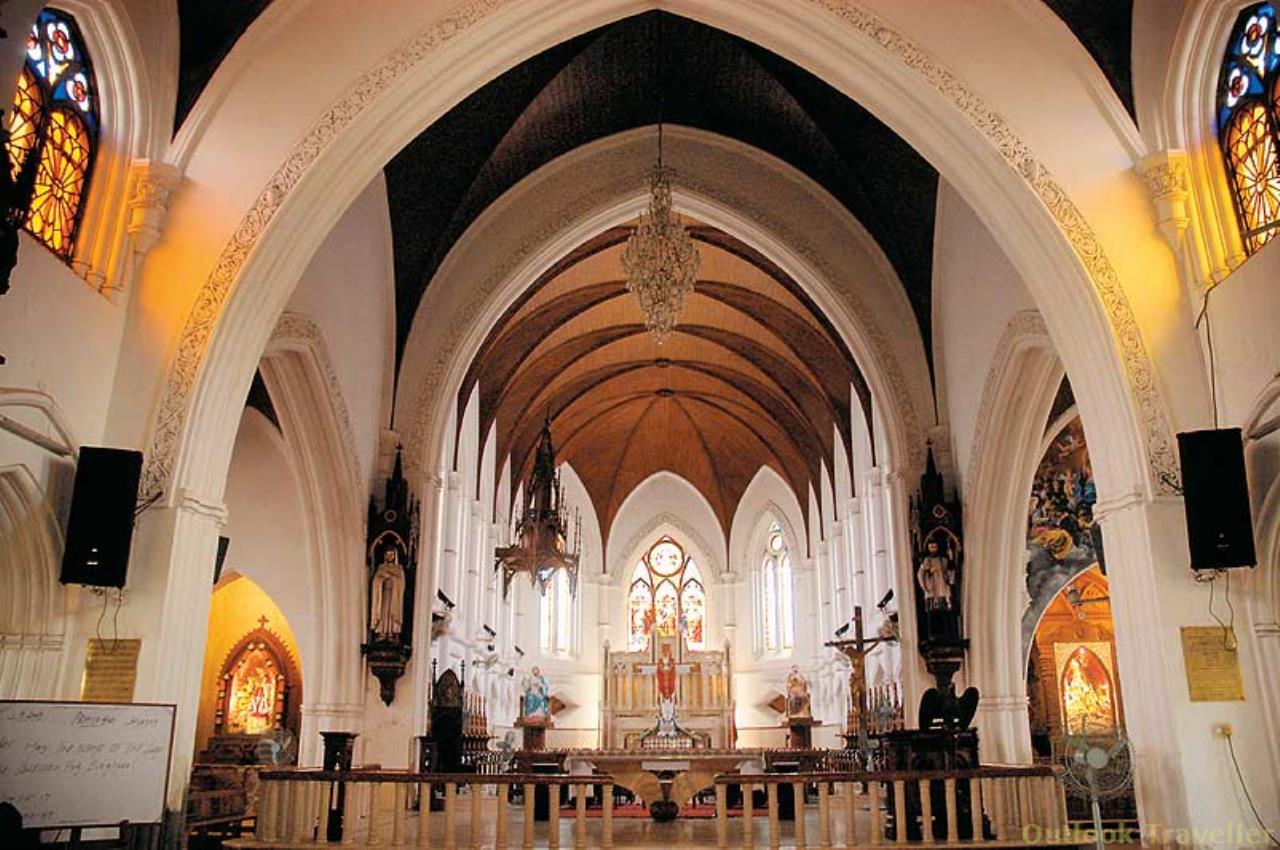Tufted priests on motorcycles speeding to the next puja, white angavastrams flying in the wind.
Well, someone did, so last Saturday, I visited six of what I am told are about 120-odd churches in Chennai. At about 8am, a bunch of us are gathered on a pavement under a steadily rising sun, awaiting our guides from Storytrails India, the company that organises these offbeat city tours. Then, armed with umbrellas and fruit juices, we all hop into tourist autos and set off for the first church. The autos are part of a troupe recently pressed into service by the Tamil Nadu tourism department. They don’t look any less bloodthirsty than their brethren and probably are not, but this trip I don’t have to find out, so bonus! I get an extended Chennai auto ride without my blood pressure rising to apoplectic levels.
By now, the autos are straining up St Thomas hill, which could make quite an enjoyable trek some time when the sun is not so hot and you are feeling gently masochistic. On top, greeted by lovely views and a rash of tourists, you find an unexpectedly austere church — just a square white structure with the two mandatory side wings. No imposing spire or vaulting nave. Given the spot’s historical significance — St Thomas the apostle preached and was killed here — I would have expected a fabulous outpouring of architectural sentiment but it’s a simple, almost drab, place. And, typically, aesthetics and comfort are totally and happily missing. In another country, this would have been an oasis of flowers, shaded benches and cafés.
Inside the church, two things stand out — the first is the carved granite cross at the altar. Rough-hewn supposedly by the apostle himself, its unique design gave birth to what’s known as the Thomas Cross. The second is an ancient oil of Madonna and child, popularly believed to be one of seven such painted by St Luke. The walls are lined with paintings of apostles and their various gory deaths, the details explained gleefully by young Navarre, our guide. He is brilliant — from Abraham’s progeny to Biblical legends and torture tales, he dishes it all out with refreshing irreverence.
Luz Church, built in 1516 making it the oldest church in Chennai, with faded walls and struggling garden, is tucked away behind the bustling streets of Mylapore. Simple, peaceful, almost like a home, and judging by the fading plaques, once perhaps a private chapel for a family named De Frieze many centuries ago. But the next stop is where we will see our first steeple — the beautiful St Thomas Basilica, almost unbearably white in the sunshine. Here, church architecture finally comes into its own, in tune with the rising political and economic fortunes of the next generation of colonists. The original modest Portuguese effort replaced by the British with a soaring Gothic structure, stained glass, vaulting roofs and majestic nave are now all in view. The apostles on the walls are no longer being martyred; they are confident, Hollywood handsome. But, in that intriguing pastiche true of almost all churches in South India at least, lotuses and peacocks and tulsi garlands abound.
With the lovely St Mary’s, we move from Roman Catholic to Anglican and back to a functional church that looks almost fort-like. Built by the soldiers in Fort St George in 1680, its roof and walls are said to be bomb-proof. And the insides are steeped in history — Robert Clive lived next door and worshipped here, Elihu Yale was married here, Charnock’s daughter is buried here.
The stories are still coming and now we are in the crowded streets of George Town. One seamless stretch of shops is suddenly punctuated by a white façade and Dutch gable. And inside, a large Armenian church, with spacious grounds, a squat belfry in the middle, and an air of ancientness. Built in 1772 by Armenian merchants, its sheer unexpectedness is breath-taking. The belfry houses six beautiful bells, which still peal each morning to summon the faithful — one solitary Armenian family who double as caretakers.
St Andrew’s Kirk is Presbyterian and beautiful. The neo-classical columns in the portico are complemented by the unexpected circular nave inside, supported by 16 fluted Corinthian pillars and topped by a blue dome painted with stars representing a constellation seen from Scottish skies. Standing among the glossy mahogany pews, we listen to more stories of saltires, Calvinists and dragons, as the noon sun blazes the stained-glass window with colour. It’s a peaceful moment.
We step outside, immediately and violently embraced by the 21st century, and race back home in our wild autos. After an exhausting work week, a steeplechase on Saturday seems a perfect, timeless, meandering way to start a weekend. Maybe I’ll do temples next.
Tours usually take place on weekends. Contact Storytrails India (34, North Usman Road, T. Nagar, Chennai – 17, 044-42124214, 9884040102, www.storytrails.in) for their schedules, which vary every month. This tour (called ‘Steeple Chase’) costs
Rs 795 per head; timings: 8.30am-12.30pm.
Luz Church
St Thomas Basilica
Storytrails India


